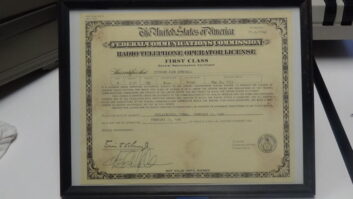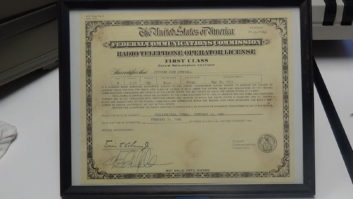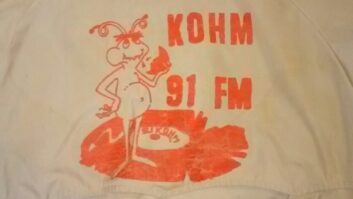Thanks for Dick Taylor’s commentary “Invest in People and Programming, Not More Signals.” If I may use an analogy here: Ocean City, U.S.A., is expanding its boardwalk to accommodate more commercial space for eateries.
Sounds great, right? There is the promise of more variety of food offerings for increasingly diverse populations, young and old. We’ll finally have room for more Asian, Latin, Caribbean and Middle Eastern fare that a number of people have been requesting, for decades.
Here’s the problem. The new spaces are being taken by chain restaurants, with no room for “mom and pop” independent vendors. The “new spaces” will only be an extension of what is already available, up and down the boardwalk: everyone’s favorite Italian and Mexican chain restaurants and another “Big Marty’s” burgers, greasy fries and funnel cake, all because “it sells.”
[Check Out More Letters at Radio World’s Reader’s Forum Section]
Sound familiar? That’s exactly how commercial radio has operated since 1996. As with retail in Ocean City, it has nothing to do with adding more variety to the radio dial and everything to do with who controls the radio real estate under current rules and regulations.
We can thank the National Association of Broadcasters for the rider it succeeded in tacking on to the 1996 Telecommunications Act, signed by President Clinton, which increased the number of radio stations that one entity can own in any given radio market in the country (eight stations per major market, and now they want even more station per market). What this did in effect was reduce programming choices across the radio dial, slash payrolls and with it send more and more talented people out on the street.
When I hear someone say they think expanding the number of radio stations we have will improve anything, I laugh, given the current ownership rules. The “big boys” like iHeart own all the “blowtorch” signals everywhere and they homogenize everything they get their hands on.
Under the current “playing field,” expanding the number of radio stations we’d have would only expand the mundane. Instead of “57 channels with nothing on,” we’d have “88 channels with nothing on.” No imagination, no freedom for innovative people, just the same tainted focus group-driven pap.
For just once, I wish “gurus” like iHeart’s Bob Pittman would take a peek back to a time before FM radio became king in the radio marketing world in the 1960s, when circular polarization had just been perfected, but before that groundbreaking technical breakthrough pushed FM radio into the limelight. It was a time when the “inmates ran the asylum” with “underground FM” radio, before the top 40 radio doctors arrived around 1973. It was the most spontaneous, creative and fun time in the history of commercial radio. That is the kind of investment in people and programming that I think Dick Taylor is hinting at in his article; not to dredge up those old album rock tracks, but to bring back that wide-open spirit that has sorely been missing since that contrived “superstars” format arrived to mimic “hip FM” radio in 1973. People see through that kind of plasticity. The numbers show it.
If you want a clue, find a 1972 aircheck from KDKB(FM), Phoenix, to hear unbridled imagination and fun taking place, which included not only cutting edge music of the day, but well-produced (in-house) fake commercials and spoof commentary. It was a golden age of radio for boomers.
Pete Simon
Arvada, Colo.










